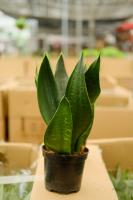Can a Neighbor Plant a Tree on a Property Line?
When it comes to property disputes, planting a tree on the property line can be a contentious issue between neighbors. There are several factors that come into play when deciding whether a neighbor can legally plant a tree on the property line or not. In this article, we will explore the legal aspects of planting a tree on the property line, and the potential impact it may have on both neighbors.
What are property lines?
Property lines are the imaginary vertical planes that divide two plots of land. They are determined by a land survey that maps out the exact boundaries of each plot of land. Property lines can be visible, such as a fence or a wall, or they can be invisible, especially in the case of open land without any physical boundaries. In any case, property lines are legally binding and must be respected by all parties involved.
What are the legal implications of planting a tree on the property line?
Planting a tree on the property line can be a tricky issue because it affects both neighbors, and both may have different opinions on the matter. Legally, a neighbor has the right to plant a tree on their own property, even if it is close to the property line. However, if the tree’s roots, branches, or leaves encroach upon the other neighbor’s property, then that neighbor has the legal right to trim the tree back to the property line. In this case, the tree owner is responsible for ensuring that their tree is not causing damage to the neighboring property or infringing on their rights in any way.
What are the potential issues with planting a tree on the property line?
Planting a tree on the property line can cause several issues between neighbors, some of which are:
Property damage: If the tree’s roots grow too close to the property line, they may damage the neighboring property by lifting the foundation, damaging pipes, or cracking walls. The cost of repairing this damage may become a bone of contention between neighbors.
Light and view obstruction: A tree planted on the property line may obstruct the light or view from the neighboring property, which may lead to disagreements between neighbors.
Noise: Some trees can be noisy when they rustle in the wind, and this may cause a disturbance to the neighboring property.
Disputes over ownership: If the tree is planted on the property line, it may be unclear who has ownership of the tree, and this may lead to disputes between neighbors.
What can you do if your neighbor plants a tree on the property line?
If your neighbor plants a tree on the property line, your first step should be to try and communicate with your neighbor and come to a mutual agreement about the tree’s placement and potential impact. If that does not work, you may seek the help of a mediator, or the local authorities, to resolve the issue. In any case, it is always better to try and resolve the issue amicably, without resorting to legal action.
Conclusion
Planting a tree on the property line can be a contentious issue between neighbors. While a neighbor has the legal right to plant a tree on their own property, they must ensure that the tree does not encroach upon the neighboring property in any way. The potential issues with planting a tree on the property line can cause disagreements between neighbors, and it is always best to try and come to a mutual agreement amicably.

 how many times do yo...
how many times do yo... how many planted tre...
how many planted tre... how many pine trees ...
how many pine trees ... how many pecan trees...
how many pecan trees... how many plants comp...
how many plants comp... how many plants can ...
how many plants can ... how many plants and ...
how many plants and ... how many pepper plan...
how many pepper plan...
































